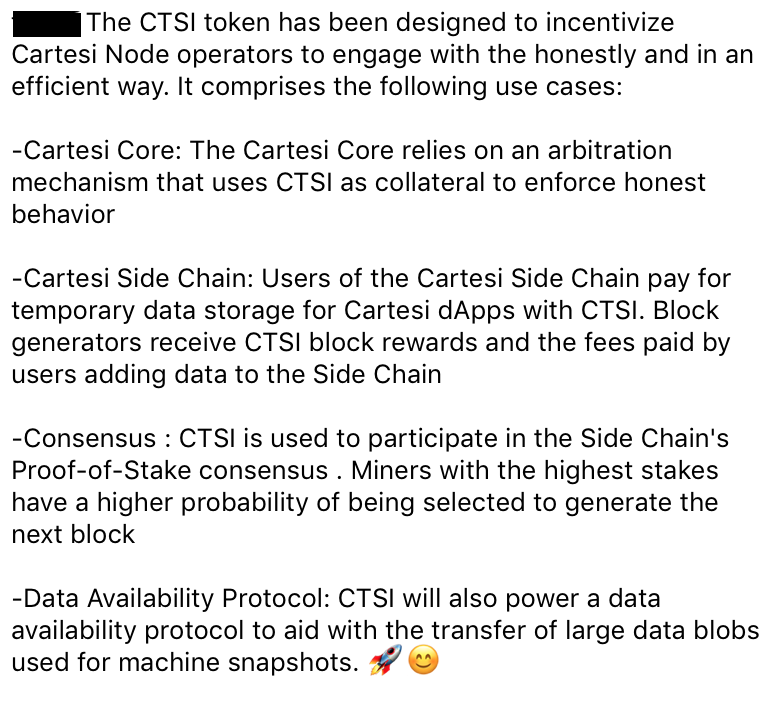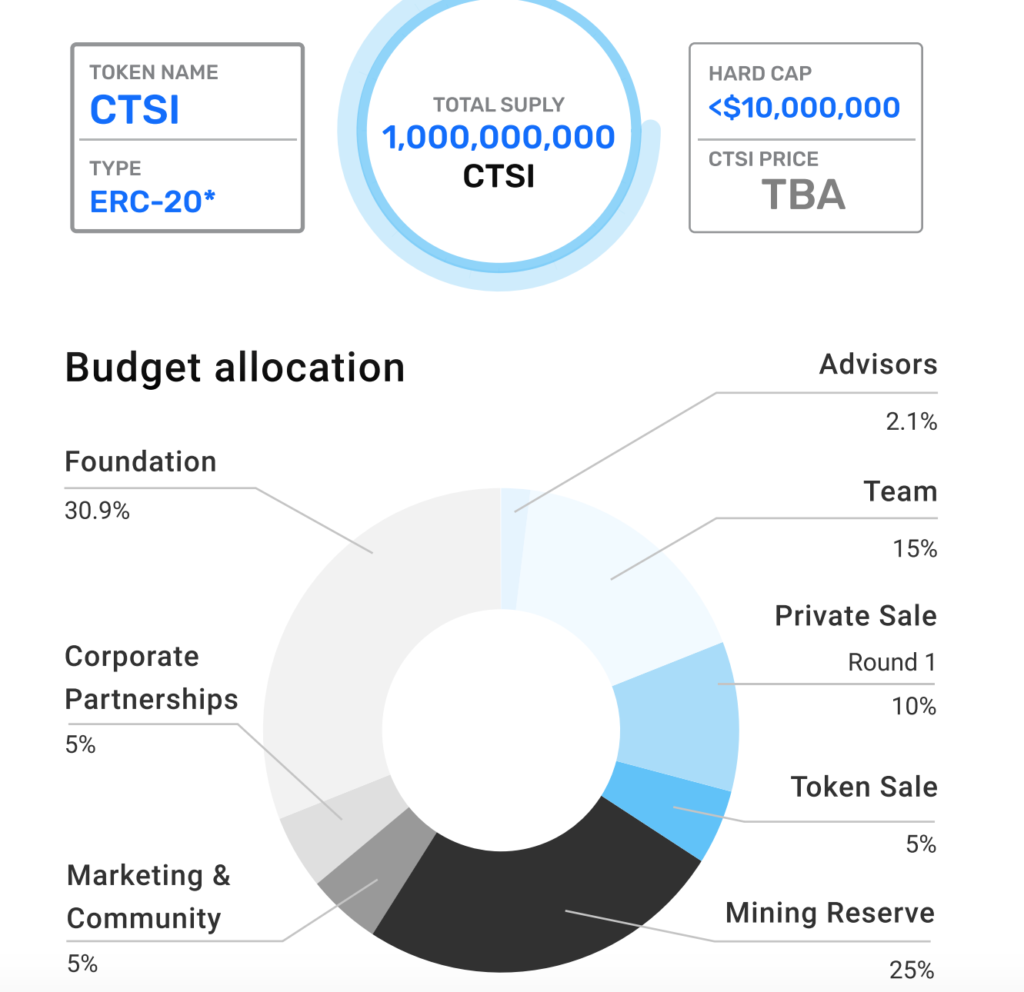
Cartesi is a layer two scaling and development platform. It serves as a bridge between Linux and blockchain. Blockchain software, in comparison to Linux, is very rudimentary. It doesn’t even have the concept of a file! Cartesi allows devs to take advantage of 50+ years of Linux software tools. It can help developers build and scale the next generation of blockchain killer apps.
Cartesi allows apps to run “heavy computation”, inside a Cartesi node. This isn’t possible to do on-chain. The computation done in a Cartesi node, is also verifiable and reproducible. This provides decentralization, with the security guarantees of the blockchain. Local consensus can be achieved inside a node, with any dispute being settled on the main-chain.
To demonstrate this tech, Cartesi has created a tower defense game called Creepts. The game uses fully decentralized logic. This makes the outcome of the game, provably fair. The team is experimenting with gaming, but Cartesi has many use-cases. This includes: defi, logistics, and A.I. marketplaces.
- The Cartesi project has been in development, since 2018. Notable investors include Sergei Popov, who is a co-founder of IOTA. It’s goal is to enable development of scalable, cost-efficient dapps, with high levels of computation and security. It is also interoperable with other blockchains.
Here are some important links:
Creating Off-Chain Local Consensus in a Cartesi Node
Blockchains are very slow, because multiple machines must reach consensus. Global consensus is both time consuming and expensive. It makes scaling difficult. BUT, a decentralized app only needs to achieve local consensus, in most instances. Cartesi splits up the vital on-chain processes, from the less vital processes, which are run in the Cartesi VM. Local consensus can be used for the majority of computation. This increases speed, and reduces the costs.
Does Cartesi work with other Layer 2 Scaling Types?
Cartesi is complimentary to both ETH 2.0, and other L2 scaling types. Other compatible scaling projects include: Plasma (OmiseGo), State Channels (Celer Network), ZK-Proofs (Loopring), and Side-Chains (xDai). The other layer 2 projects can “specify full Cartesi computations within their transactions.”
Decentralized, Fair Gaming with Cartesi
Decentralized gaming has two approaches. The first uses blockchain to interact with NFTs. The second has fully decentralized gaming logic, which offers a provably fair game. This type is good for tournaments, ensuring no one can cheat. Games with decentralized logic can verify scores, with no central authority. This type of game is also open-source. This allows them to be forked, and governed like a DAO.
Cartesi’s first game, Creepts is built on decentralized Linux. This allows for complex, fair games, with high on-chain security. Creepts uses heavy computation, which wouldn’t be capable of running on-chain. The game is fast and inexpensive, because it runs on layer 2.
The Cartesi CORe: Cartesi Nodes, Cartesi Machines, and the Data Ledger
Cartesi uses a hybrid on/off-chain approach. Most computation is done off-chain, with vital aspects like payments being done on-chain. Below, i’ll explain the components of the system…
What is a Cartesi Node?
A Cartesi node holds the off-chain components of an app. The node is composed of both hardware and software. Users must interact with these nodes to run an app. Each node contains a Cartesi Machine, which is a VM running distributed Linux. The decentralized logic is run and replicated in the VM.
What is a Cartesi Machine?
A Cartesi Machine, is the virtual machine (VM) inside of a node. It hosts a decentralized version of Linux. All computation that is done inside the Cartesi VM, is verifiable and reproducible. The core splits computation into that which needs to be reproducible, and that which doesn’t. Dividing the computation, brings the performance in line with traditional speed and storage capacity of modern systems.
How the Data Ledger solves the Data Availability Problem
Layer 2 projects have a data availability problem. This occurs if one of the parties goes off-line during a transaction. This is fixed with a POS side-chain, called the Data Ledger. The data ledger is also used for “short term storage, garbage collection, sharding, off-chain emulated computations, and localized consensus.”
What are Possible Use Cases of Cartesi?
Cartesi is capable of building scaleable apps, running Linux, and using high amounts of computation. Cartesi’s uses extend beyond gaming. It has utilities in: defi, marketplaces, outsourcing, logistics, and even scientific research. It can improve the performance of any type of app.
The Tokenomics of $CTSI
$CTSI is Cartesi’s native token. It is used to reward node operators and to pay to store data on the data ledger. It’s staked as collateral, in the proof-of-stake side chain. Block producers receive CTSI rewards, and fees from the data ledger. Staked CTSI collateral is slashed, if a node operator behaves dishonestly.
Here’s a full explanation of the token’s utility, when i asked in the Telegram group:

CTSI has a total supply of 1 billion tokens. 250 million tokens are reserved for miners of the POS algorithm. There are a series of time-locked accounts, which will release coins over time.
This article discusses the CTSI macro-economy and staking. CTSI mining is coming in Q4 of 2020.

My Conclusion on Cartesi
Layer two scaling projects are in demand. Ethereum 2.0 will take 2 more years. The Cartesi project can provide a fix for Ethereum’s scalability issue. On top of scaling, the project allows developers to build with Linux. They can use higher amounts of computation, while maintaining high security. This will drive the creation of next generation killer blockchain dapps.
There is a demand for CTSI tokens within the ecosystem. I do have some concerns about the high token supply. But, as you can see in the graphic above, the majority is for mining rewards, to support the foundation, and to fund future growth of the project.
The team and founder Erick DeMoura is capable and experienced. He has an association with IOTA, which will help gain connections with other major blockchain projects.
I think Cartesi’s tech is a critical puzzle piece in our decentralized economy. It will produce better apps, which will help speed growth of the entire ecosystem.
If you liked this article, please follow me on @defipicks